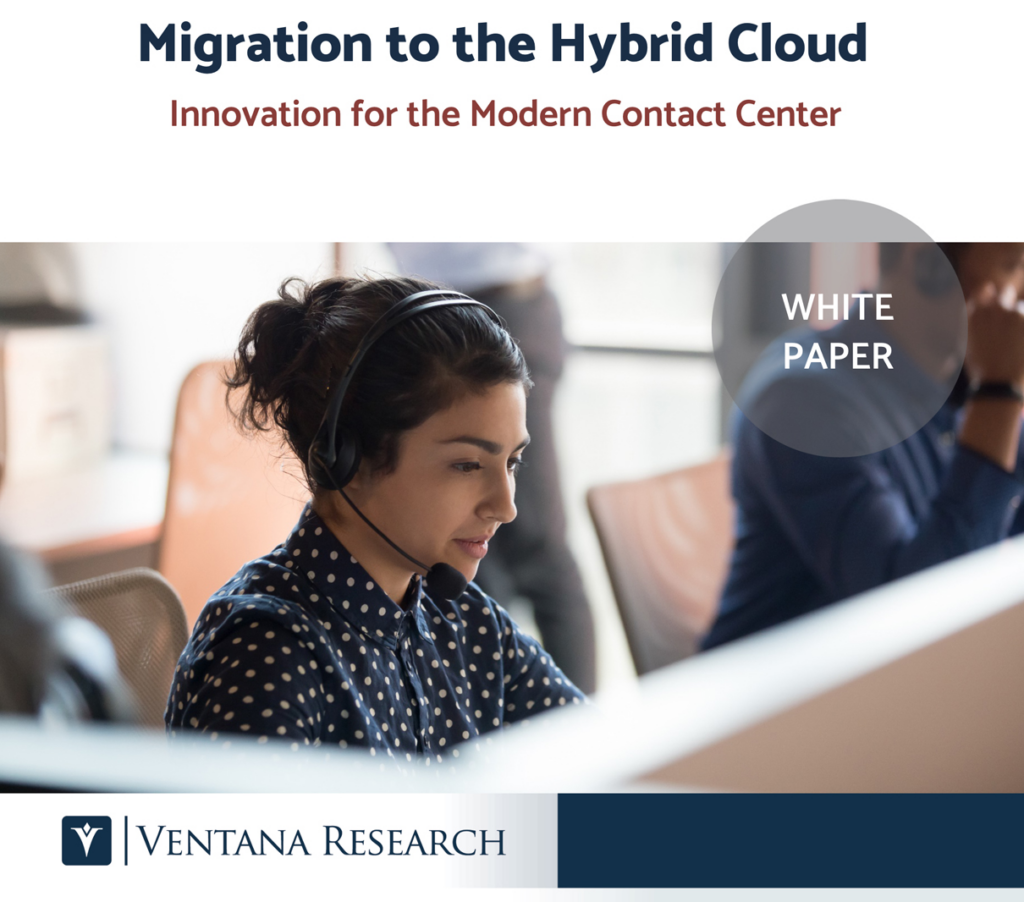
For contact center leaders wrestling with cloud migration challenges, a “mix-and-match” strategy that incorporates existing on-premise technology may offer the best path forward. Such a hybrid approach can help enterprises take advantage of new features and applications while preserving current functionality. That’s the key takeaway from “Migration to the Hybrid Cloud: Innovation for the Modern Contact Center,” a new white paper from Ventana Research sponsored by Avaya.
“Dividing capabilities among cloud and on-premises or private cloud can improve reliability by distributing services across different data centers and systems,” said the report. “Importantly, a hybrid model affords the opportunity to be innovative without being disruptive. Organizations can migrate without having to completely transform, and gain the benefits of the cloud without losing existing investments.”
Moving all contact center operations to the cloud requires a full assessment of privacy regulations, and data configurations, including where the data is stored. That’s a particular concern for multinational enterprises that may have data and contact center operations in multiple locations. In addition, organizations in the government, healthcare, legal, and financial service sectors face a long list of data security and privacy regulations.
The new study noted that on-premise investments are still delivering value for most enterprise contact centers. On-premises automated call distribution (ACD) systems, for instance, can have a long lifespan. “ACDs can also be tightly linked to back-office systems, and this interconnectivity can complicate migration issues,” said the report, noting that 39 percent of organizations participating in the study prefer on-premises analytics and data deployment.
Visualizing a Hybrid Contact Center
An alternative to an all-cloud contact center is a hybrid model in which core elements remain on-premises while new features are provided through a public cloud and connected through application programming interfaces (APIs) and other integrations. “The cloud-based components are often purchased separately or on an ad hoc basis, which allows an organization to put individual components on its own sites, self-managed or not, or on a vendor’s servers,” said the report.
Ventana Research said the most common hybrid mode is for enterprises to retain call control and telephony components via an on-premise call-routing engine or managed services environment. Alternatively, a call routing system can be created in the public cloud, while the calls themselves are routed to an on-premises system in a two-way mode.
“That lets an organization preserve contextual information and even test out new lines of business without forcing a complete replacement of technology infrastructure,” according to the white paper. “It is also common to see cloud-based interactive voice response (IVR) or intelligent virtual assistant tools for digital channels, and some analytics tools – especially those that originate in departments like marketing or sales.”
Charting a Hybrid Course
Avaya IT professionals know that the cloud is not a monolithic entity that provides only one option. A hybrid approach allows an enterprise to retain control of key pieces of the data and applications puzzle while leaving the door open to full-scale migration at some point in the future.
If you are considering a hybrid model, Ventana Research recommends the following step-by-step approach:
• Examine your existing technology stack to determine if it makes financial, operational, and technical sense to move to the cloud.
• Build a picture of which internal stakeholders are eager or reluctant, and which factors go into their stances.
• Identify your options with an emphasis on flexibility, such as choosing which technology to migrate to and how quickly.
As the white paper says, careful assessment and planning are necessary to avoid unexpected consequences or “gotchas” when making a major shift in technology.